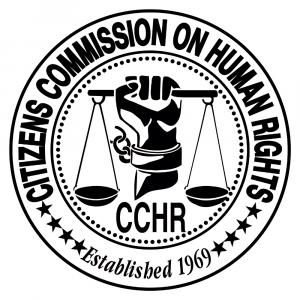New York Law to Screen Children for Lead Underscores Serious Risk of Brain Damage, Attention and Behavior Problems

Lead is a toxic metal known to cause health and mental health problems. Research found that 50% of children had detectable levels of lead in their bloodstream, increasing their risk of hyperactive or inattentive behavior that could be misdiagnosed as ADHD.
Prior research found 50% of American children have detectable lead levels that could be responsible for many diagnoses of ADHD.
“Lead poisoning can occur at very low levels of lead exposure,” says Vicki Iannotti, M.D., assistant professor of pediatrics at Columbia University Vagelos College of Physicians and Surgeons. “It is very important to assess your risk of exposure to lead in your home, school, and work environment.”
Lead is a toxic metal known to cause physical and mental health problems, especially in young children whose bodies are in a state of growth and development. Additionally, the absorption of lead occurs more quickly in children than in adults.
No safe level of lead exposure in children has been found. Even the lowest level of lead in the bloodstream puts a child at risk of brain damage, lower IQ, and attention, behavior, and learning problems.
“Exposure to lead can seriously harm a child’s health, including damage to the brain and nervous system, slowed growth and development, learning and behavior problems, and hearing and speech problems,” according to the Centers for Disease Control and Prevention (CDC).
A 2014 study found that increased blood lead levels in children increased their risk of behavioral and emotional problems, including emotional overreaction, aggression, anxiety, and depression.
This risk is widespread. A 2021 study from Quest Diagnostics revealed that half (50.5%) of the 1.1 million U.S. children tested had detectable levels of lead in their blood.
Despite progress in reducing sources of lead exposure in the U.S., lead is still found in the paint dust in older homes, schools and other buildings and in older water pipes, the soil and air around heavy industry and highways, and some consumer products. Young children breathe lead dust or touch and put contaminated objects into their mouths.
“The first signs of lead poisoning in children are often subtle neurobehavioral problems that adversely affect classroom behavior and social interaction,” according to the Agency for Toxic Substances and Disease Registry of the CDC.
The child can become hyperactive or inattentive, behavior that increases the chance of the child being labeled with attention-deficit hyperactivity disorder (ADHD). At higher lead levels, behavior can worsen, with children refusing to play and showing aggressive and antisocial behavior which potentially can be labeled as still other psychiatric mental disorders.
A diagnosis of ADHD increases the likelihood of a child being prescribed powerful, mind-altering psychiatric drugs that carry many dangerous, even life-threatening side effects. The Citizens Commission on Human Rights (CCHR) database of psychiatric drugs side effects currently lists 34 drug regulatory agency warnings and 32 research studies showing adverse effects for children under the age of 18 from the stimulant drugs typically prescribed for ADHD.
Those side effects include slowed growth, high blood pressure, heart problems, depression, suicidal thoughts, hostility, anxiety, psychosis, mania, violence, and sudden death. The psychostimulant drugs also carry the risk of addiction, with experts referring to them as “kiddie cocaine” because of their many similarities to cocaine.
If lead is detected in a child, the CDC recommends parents consult with the child’s physician and take immediate action to find and fix any lead hazards in the home, which can be found from a home inspection by a licensed lead inspector.
By removing lead sources, lead levels should drop noticeably in the child’s blood in a month or two, according to Joel T. Nigg, Ph.D., a clinical psychologist and professor in the departments of Psychiatry and Behavioral Neuroscience at Oregon Health & Science University. With lower blood lead levels, the child’s physical and mental health are likely to improve and the behavioral problems may disappear completely.
Missing a true diagnosis of lead poisoning and instead diagnosing a child with ADHD and prescribing ADHD drugs can endanger a child’s life on both counts. With research revealing that so many children have detectable levels of lead in their bodies, parents would do well to discuss with their physician whether their child should be tested for lead exposure, especially if the child’s behavior causes concern.
CCHR has long recommended a complete physical examination with lab tests, nutritional and allergy screenings, and a review of all current medications to identify any physical causes of unwanted emotional or behavioral symptoms, which might otherwise be misdiagnosed and incorrectly treated as a psychiatric disorder.
WARNING: Anyone wishing to discontinue or change the dose of a psychiatric drug is cautioned to do so only under the supervision of a physician because of potentially dangerous withdrawal symptoms.
The Citizens Commission on Human Rights was co-founded in 1969 by members of the Church of Scientology and the late psychiatrist and humanitarian Thomas Szasz, M.D., recognized by many academics as modern psychiatry’s most authoritative critic, to eradicate abuses and restore human rights and dignity to the field of mental health. CCHR has been instrumental in obtaining 228 laws against psychiatric abuses and violations of human rights worldwide.
The CCHR National Affairs Office in Washington, DC, has advocated for mental health rights and protections at the state and federal level. The CCHR traveling exhibit, which has toured 441 major cities worldwide and educated over 800,000 people on the history to the present day of abusive and racist psychiatric practices, has been displayed at the Congressional Black Caucus Foundation Annual Legislative Conference in Washington, DC, and at other locations.
1 https://www.cuimc.columbia.edu/news/lead-poison-and-children-no-amount-lead-safe
2 https://www.cdc.gov/nceh/lead/prevention/default.htm
3 www.cdc.gov/nceh/features/leadpoisoning/index.html
4 https://www.ncbi.nlm.nih.gov/pmc/articles/PMC4152857/pdf/nihms619587.pdf
5 https://newsroom.questdiagnostics.com/2021-09-28-Over-Half-of-U-S-Children-Have-Detectable-Levels-of-Lead-in-their-Blood,-Finds-Quest-Diagnostics-Health-Trends-R-Study-Published-in-JAMA-Pediatrics
6 https://www.atsdr.cdc.gov/csem/leadtoxicity/signs_and_symptoms.html
7 https://www.cchrint.org/psychdrugdangers
8 https://www.psychiatrictimes.com/view/understanding-link-between-lead-toxicity-and-adhd
Anne Goedeke
Citizens Commission on Human Rights, National Affairs Office
+1 202-349-9267
email us here
Visit us on social media:
Facebook
ADHD is a label, not a disease
Legal Disclaimer:
EIN Presswire provides this news content "as is" without warranty of any kind. We do not accept any responsibility or liability for the accuracy, content, images, videos, licenses, completeness, legality, or reliability of the information contained in this article. If you have any complaints or copyright issues related to this article, kindly contact the author above.


